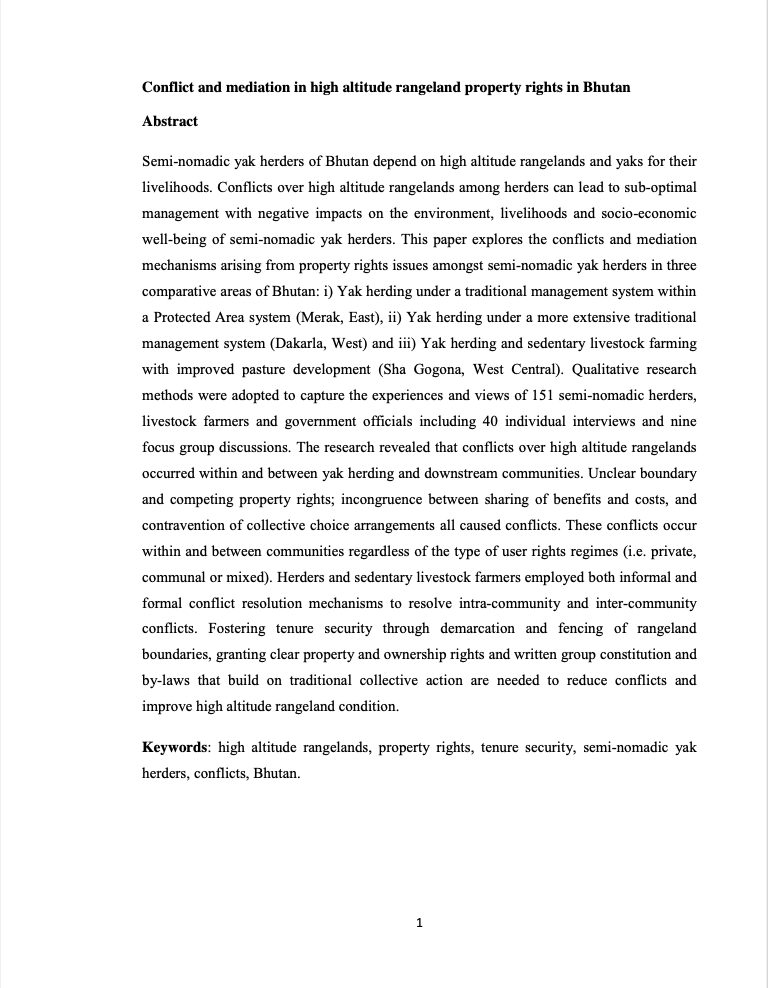Resource information
Semi-nomadic yak herders of Bhutan depend on high altitude rangelands and yaks for their livelihoods. Conflicts over high altitude rangelands among herders can lead to sub-optimal management with negative impacts on the environment, livelihoods and socio-economic well-being of semi-nomadic yak herders. This paper explores the conflicts and mediation mechanisms arising from property rights issues amongst semi-nomadic yak herders in three comparative areas of Bhutan: i) Yak herding under a traditional management system within a Protected Area system (Merak, East), ii) Yak herding under a more extensive traditional management system (Dakarla, West) and iii) Yak herding and sedentary livestock farming with improved pasture development (Sha Gogona, West Central). Qualitative research methods were adopted to capture the experiences and views of 151 semi-nomadic herders, livestock farmers and government officials including 40 individual interviews and nine focus group discussions. The research revealed that conflicts over high altitude rangelands occurred within and between yak herding and downstream communities. Unclear boundary and competing property rights; incongruence between sharing of benefits and costs, and contravention of collective choice arrangements all caused conflicts. These conflicts occur within and between communities regardless of the type of user rights regimes (i.e. private, communal or mixed). Herders and sedentary livestock farmers employed both informal and formal conflict resolution mechanisms to resolve intra-community and inter-community conflicts. Fostering tenure security through demarcation and fencing of rangeland boundaries, granting clear property and ownership rights and written group constitution and by-laws that build on traditional collective action are needed to reduce conflicts and improve high altitude rangeland condition.

